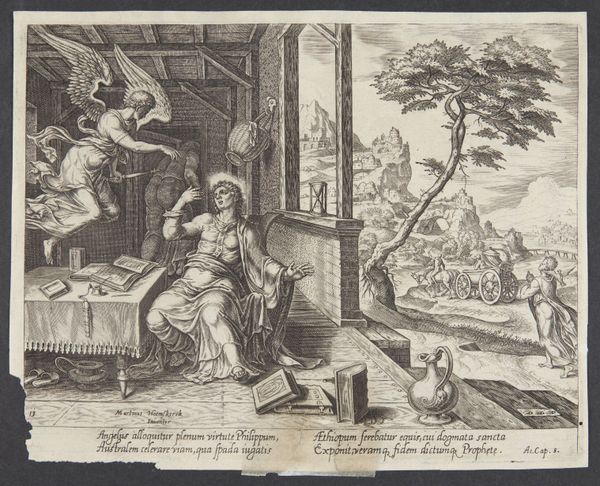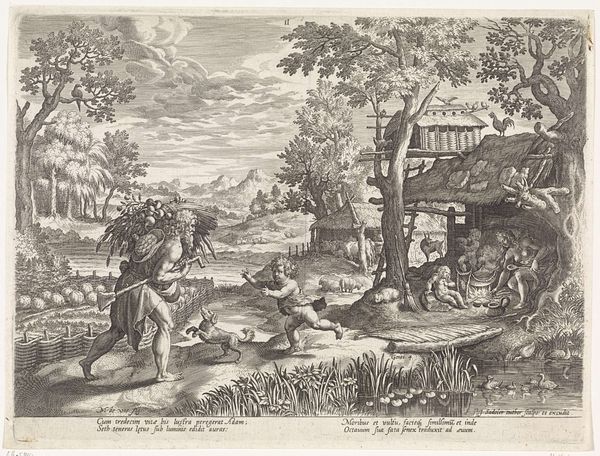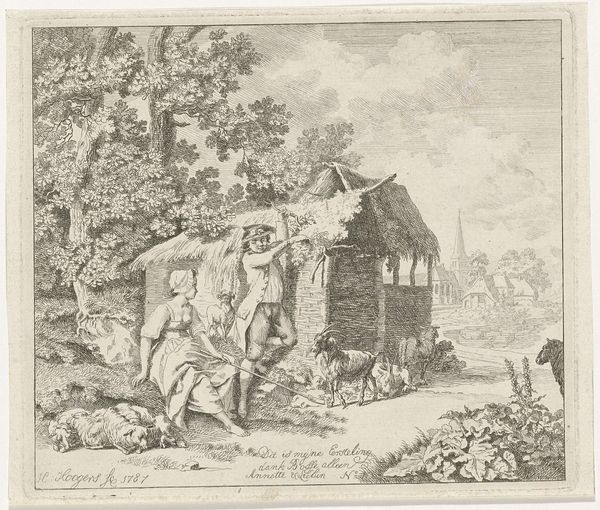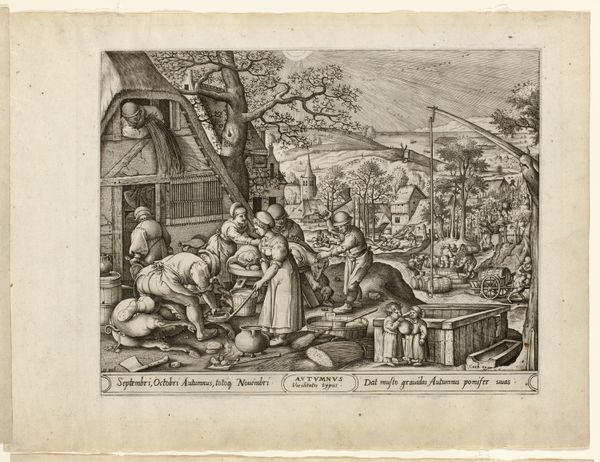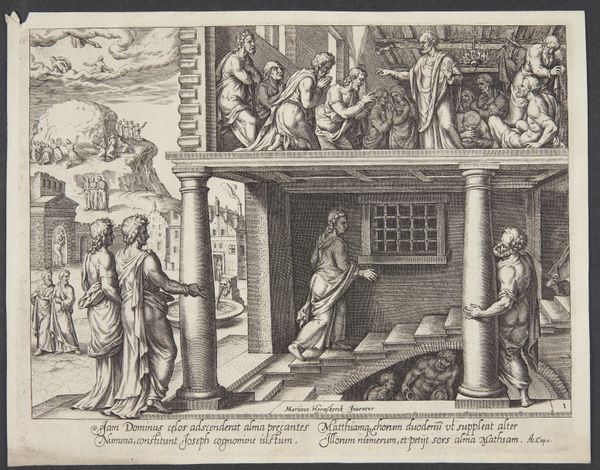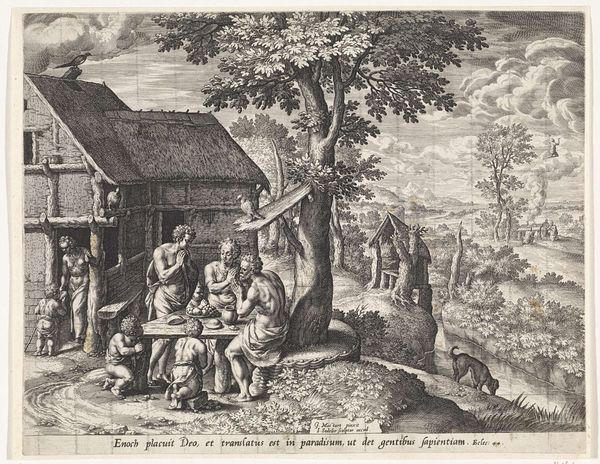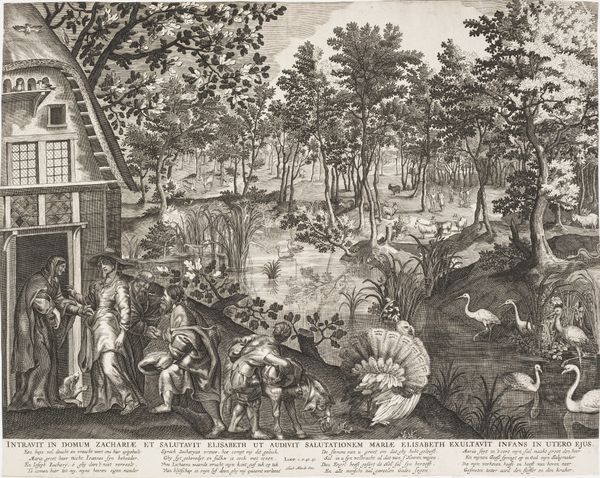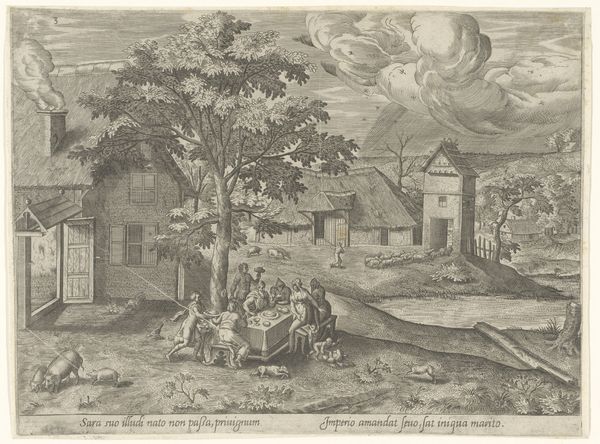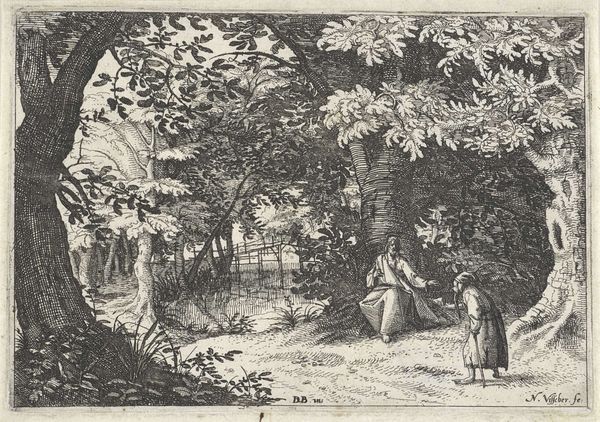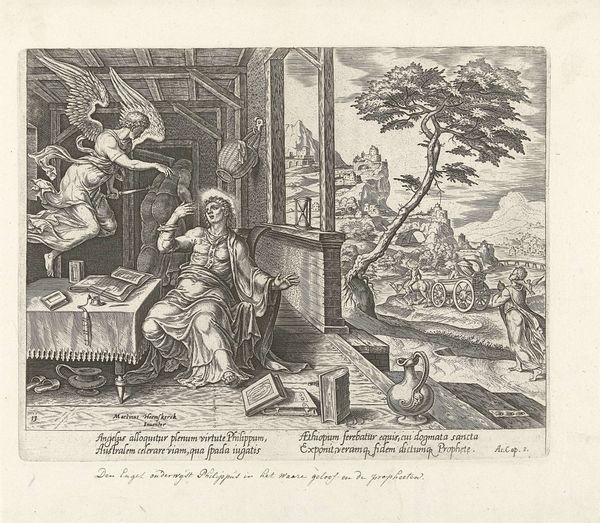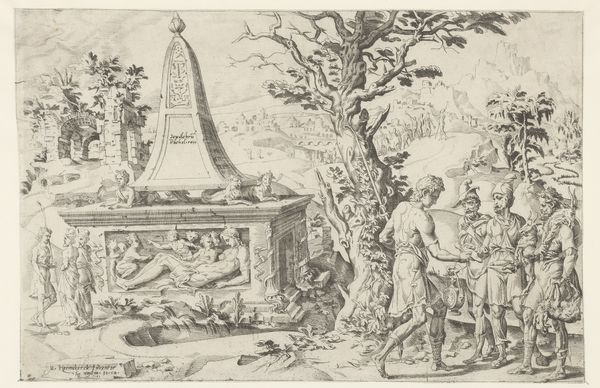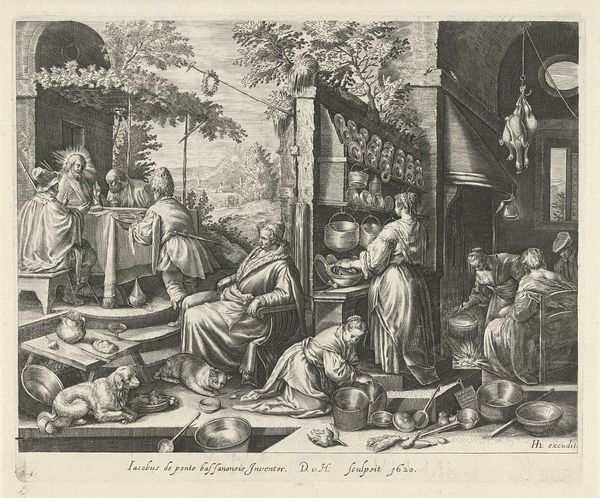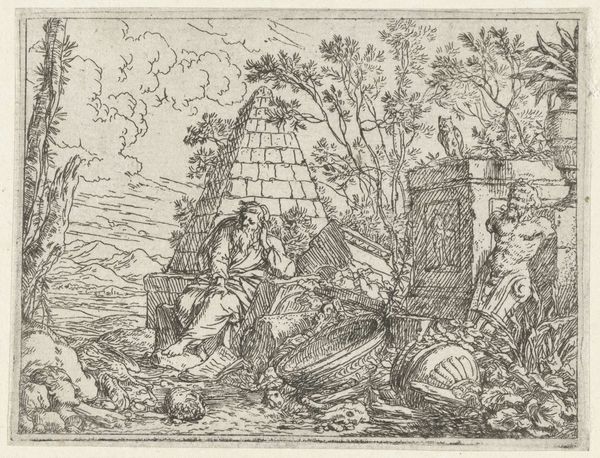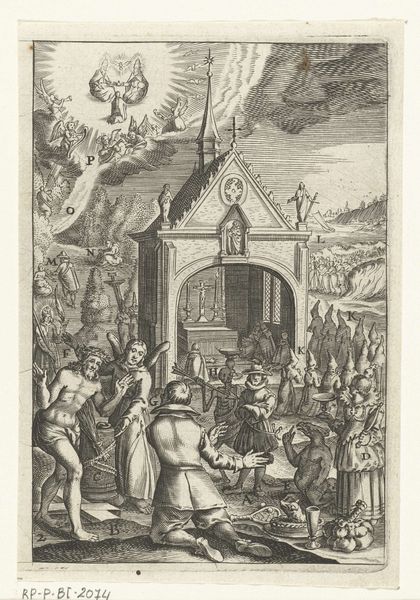
drawing, ink, engraving
#
drawing
#
pen drawing
#
dutch-golden-age
#
landscape
#
ink
#
genre-painting
#
engraving
#
realism
Dimensions: height 103 mm, width 155 mm
Copyright: Rijks Museum: Open Domain
Curator: What a bustling scene. I'm immediately drawn to the textures in the foreground, the roughly hewn wood and dense foliage created from seemingly endless tiny lines. Editor: Indeed, there is quite a bit going on. We are looking at "Landbouw en veeteelt," or "Agriculture and Animal Husbandry," a pen and ink drawing, dating to 1608 by Claes Jansz. Visscher. It's currently held in the Rijksmuseum collection. It really gives one a sense of 17th century rural Dutch life. Curator: The focus on depicting daily labor is so compelling. Note how Visscher uses hatching and cross-hatching, primarily with pen and ink, to model forms and light in an efficient manner that mimics the work being done; repetitive, functional marks build up into a detailed depiction of labor. Editor: Right, and consider the societal implications— the subject matter, celebrating common labor, would be seen as revolutionary at the time. The Golden Age in the Netherlands was, of course, built on agriculture, but was that a suitable subject for "high" art? This piece straddles the lines between a genre scene and something more politically charged. It's such a social document! Curator: Absolutely. Looking closer, one sees that the figures aren't idealized. Their postures speak of real physical exertion. Look at the woman in the lower-right scrubbing what looks like laundry. What's being washed is much less important than *how* the labor is represented: her hands, raw, rough, the strain visible. These aren’t peasants posing for the leisure of noble audiences. The sheer amount of manual work involved simply jumps out. Editor: And there’s a fascinating juxtaposition of labor happening here, between those beating the flax and those doing other types of agricultural activity outdoors. It underscores how central domestic industry was intertwined with agrarian practices. The material outcomes, textiles and produce, become evidence of the society's entire network of dependencies and resource flows. Curator: It’s a surprisingly modern approach, frankly, acknowledging the dignity of labor itself as both a visual subject, a historical touchpoint, and the bedrock upon which culture is based. The artist directs the viewers attention through this complexity by focusing the light in certain key areas and carefully orchestrating movement across the landscape. Editor: Absolutely, and for visitors today, reflecting on an image like this helps us appreciate how artistic representations can shape our understanding and give form to our relationship with broader political forces. Curator: A powerful snapshot of a particular time, represented with incredible artistry using humble materials and drawing techniques. Editor: Yes, a confluence of societal, political, and material histories made wonderfully apparent!
Comments
No comments
Be the first to comment and join the conversation on the ultimate creative platform.
